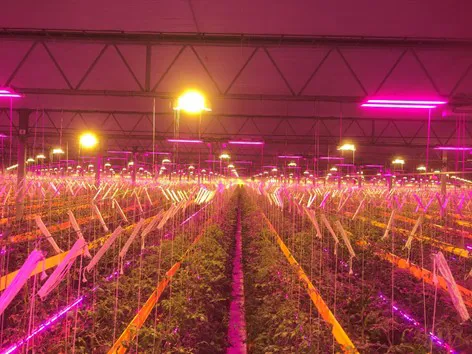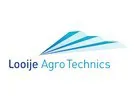Energy is one of the main pillars of a horticultural company. The purchase of gas and the purchase and sale of electricity largely determine the operating efficiency. Energy management is the continuous balancing between the right moment of purchase or sale and capacity versus rate, requirement and cultivation plan.
As an independent consultancy, Looije Agro Technics goes into this in more detail. The text below is therefore the final part of a four-part series on developments in the greenhouse horticulture lighting market, in which growers are currently (have to) make a lot of decisions, both in greenhouse vegetables, soft fruit and floriculture.
LED lamps convert electricity into light more efficiently. Investing in LED lighting goes beyond buying fixtures. The LED fixtures make a major contribution to the energy management of the horticultural business. LED fixtures can provide space to deal more efficiently with generated (CHP) heat or, on the other hand, can reduce purchasing and associated taxes.
Extra heat costs money
When using (partial) LED lighting, the thermal consumption will increase. After all, the less efficient conversion of electricity to light with SON-T lamps creates extra heat in the form of radiant heat. Heat that can have a useful value in photosynthesis, but heat that in many cases is also experienced as annoying or too much. In general, it can be said that the additional amount of thermal energy required does not outweigh the saved electricity costs.

Hybrid top lighting with interlights in tomato cultivation
DLI
On the other hand, energy can be used more efficiently by playing with the output of the fixture in relation to the heat or CO2 requirement for the entire company. Using the Daily Light Integral (DLI), the total amount of light in the PAR spectrum per day is measured and expressed in micromoles. This light requirement can be seen as a minimum that must be filled with light from outside and supplemented with artificial light in order to achieve a minimum production. Too much light will, to a lesser extent, be converted into production, while too little light will be at the expense of production.
Dimming or boosting
Due to increasingly earlier plantings in illuminated high-wire crops, there is a need for a higher light level for part of the year, when there is virtually no outside light. This higher light level is not necessary all year round. By playing with a dimming or boost function on LED fixtures, it is not necessary to make technical concessions in terms of cultivation, and space is created to optimize for additional feed-in or participation in flexibility products.
Also in other crops, where a classic checkerboard arrangement is chosen to be able to illuminate at partial load, one of the advantages of LED lighting is the possibility of dimming. Where with a checkerboard lighting the uniformity decreases drastically at partial load, this does not have to be the case when choosing the right LED fixture. This offers energetic possibilities to provide space for extra feed-in or participation in flexibility products without harming the cultivation.
Looije Agro Technics would like to bridge the gap between theory and practice. "By means of our own knowledge and experiences in practice, the field and laboratory, we are able to translate the lighting needs of the grower into uncolored advice with a brand-independent view. Our X-factors are objectivity and independence."
Read back part 1, part 2 and 3 from the series here.
-The concept of lighting from an untainted view
- "Don't just rely on the blue 'LEDs' from the supplier"
- Measuring is knowing, especially with LED lighting
For more information:
Looije Agro Technics 
info@lat.nl
www.lat.nl
